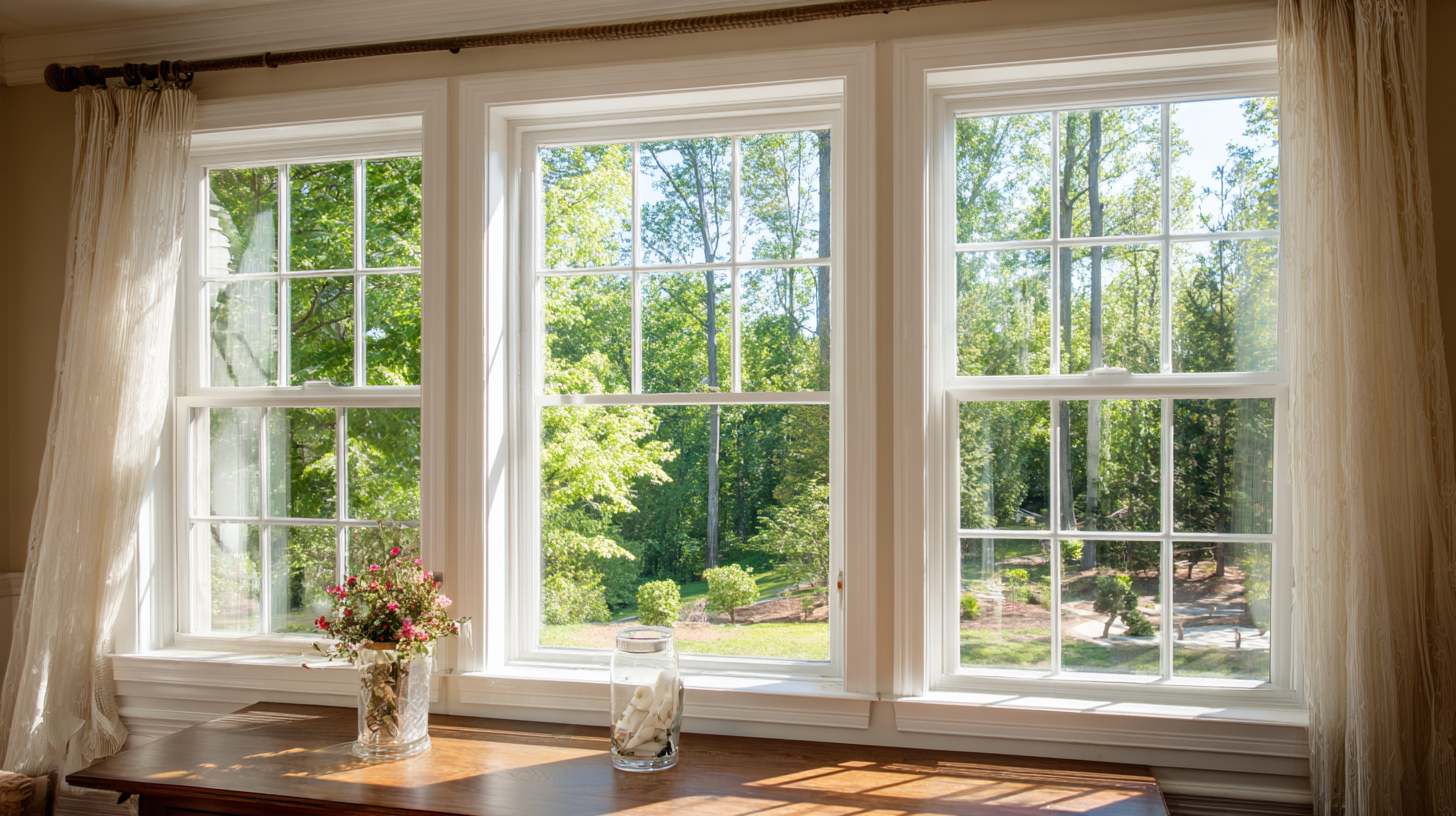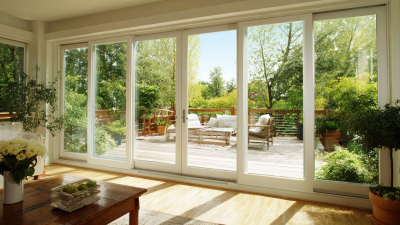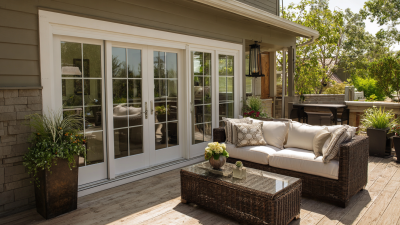The Ultimate Guide to Enhancing Home Efficiency with Double Hung Windows
In today's quest for energy efficiency and sustainable living, homeowners are increasingly turning to innovative solutions that not only enhance comfort but also provide significant cost savings.
 Double hung windows, known for their traditional aesthetics and functional versatility, are emerging as a key player in this movement. According to the U.S. Department of Energy, windows account for 25-30% of residential heating and cooling energy use. By upgrading to high-quality double hung windows, homeowners can reduce their energy bills by up to 15%, making this choice both economically and environmentally advantageous.
Double hung windows, known for their traditional aesthetics and functional versatility, are emerging as a key player in this movement. According to the U.S. Department of Energy, windows account for 25-30% of residential heating and cooling energy use. By upgrading to high-quality double hung windows, homeowners can reduce their energy bills by up to 15%, making this choice both economically and environmentally advantageous.
The design of double hung windows allows for improved ventilation and airflow, which can lead to a more comfortable indoor climate. A study by the Efficient Windows Collaborative highlights that homes with optimized window options, including double hung models, experience better thermal performance and energy efficiency. Furthermore, the ability to open both the top and bottom sashes enhances air circulation, contributing to a fresher atmosphere indoors.
As we delve into this ultimate guide, we will explore practical steps and considerations for enhancing home efficiency with double hung windows, ensuring that your investment not only adds visual appeal but also delivers substantial benefits to your home’s energy profile.
Understanding the Energy Efficiency of Double Hung Windows: Key Metrics and Benefits
Double hung windows are increasingly recognized for their energy efficiency, a key factor for homeowners looking to enhance their home’s performance. According to the U.S. Department of Energy, energy-efficient windows can reduce household energy bills by 7-15%. This is particularly relevant for double hung windows, which provide excellent ventilation and thermal performance thanks to their ability to open from both the top and bottom.
One of the critical metrics for assessing window energy efficiency is the U-factor, which measures the rate of heat transfer. A lower U-factor indicates better insulating properties. Double hung windows typically have U-factors ranging from 0.25 to 0.35, depending on the materials used and the presence of double or triple glazing. The National Fenestration Rating Council (NFRC) has found that high-quality double hung windows fitted with low-emissivity coatings can significantly enhance insulation, further improving a home’s energy efficiency. Additionally, the solar heat gain coefficient (SHGC) can be optimized with the right glazing choices, reflecting sunlight during the hot months while allowing warmth during cooler seasons, thus maximizing energy savings year-round.

The Role of Insulation in Enhancing Performance of Double Hung Windows
 Double hung windows are a popular choice for homeowners looking to enhance energy efficiency, particularly in areas with extreme temperatures like Canberra. One significant factor contributing to their effectiveness is insulation. Proper insulation plays a critical role in minimizing heat transfer, allowing homes to maintain a consistent indoor temperature. This reduction in temperature fluctuations can significantly decrease reliance on heating and cooling systems, leading to lower energy bills and a smaller carbon footprint.
Double hung windows are a popular choice for homeowners looking to enhance energy efficiency, particularly in areas with extreme temperatures like Canberra. One significant factor contributing to their effectiveness is insulation. Proper insulation plays a critical role in minimizing heat transfer, allowing homes to maintain a consistent indoor temperature. This reduction in temperature fluctuations can significantly decrease reliance on heating and cooling systems, leading to lower energy bills and a smaller carbon footprint.
Tips for optimizing insulation with double hung windows include ensuring that the windows are properly sealed. Check for gaps or cracks around the frames and use weatherstripping or caulking as needed. Additionally, consider using double-glazed windows, which feature two layers of glass separated by an insulating gas. This design provides better thermal performance compared to single-pane windows, keeping the cold air out during winter and the hot air out during summer.
Investing in advanced insulation materials, such as aerogel or thin-triple glass, can further enhance the performance of double hung windows. These materials are designed to provide excellent thermal resistance while remaining lightweight. By upgrading your windows with these innovative technologies, you can increase your home’s comfort and efficiency, making a significant difference in extreme weather conditions.
Comparative Analysis: Double Hung Windows vs. Other Window Types for Home Efficiency
When it comes to maximizing home efficiency, the choice of windows plays a crucial role. Double hung windows, which open from both the top and bottom, offer significant advantages over other types such as casement or sliding windows. Their design allows for improved ventilation, enabling homeowners to control airflow effectively. By opening both sashes, warm air can escape from the top, while cooler air enters from the bottom, creating a natural cooling effect without relying heavily on air conditioning.
In contrast, casement windows, which hinge outward, can provide a tight seal when closed, enhancing energy efficiency. However, they typically allow for less ventilation flexibility compared to double hung windows. Sliding windows may also offer some energy efficiency but often lack the versatile opening options that double hung windows provide, limiting their ability to maximize natural airflow. Ultimately, double hung windows stand out not just for their aesthetic appeal but for their practical impact on maintaining a comfortable and energy-efficient home environment.
Cost-Benefit Analysis: Investing in Double Hung Windows for Long-Term Savings
Investing in double hung windows is a strategic decision that can lead to substantial long-term savings for homeowners. These windows not only enhance the aesthetic appeal of a home but also significantly improve energy efficiency. The double hung design allows for better ventilation control, helping to reduce reliance on heating and cooling systems. This efficient airflow can lower energy bills, making it a financially wise choice for property owners looking to cut costs over time.
Additionally, the initial investment in double hung windows can be recouped through various state and federal energy efficiency rebates. Many homeowners find that the money spent on these windows pays off through increased property value, as energy-efficient homes are increasingly sought after in the real estate market.
When considering the cost-benefit aspect, the durability and low maintenance of double hung windows further contribute to their appeal. While the upfront cost may be higher than traditional windows, the long-term savings on energy bills, combined with potential tax incentives, make them an economically sound choice for enhancing home efficiency.
Maximizing Natural Light and Ventilation with Double Hung Window Design
Double hung windows are a quintessential choice for homeowners looking to enhance natural light and ventilation in their spaces. With their unique design, these windows allow both sashes to be opened independently, offering flexibility in airflow control. This feature is particularly beneficial in warm weather, as it enables hot air to escape from the upper sash while fresh, cooler air flows in through the lower one. Homeowners can precisely regulate their indoor environment, ensuring optimal comfort while reducing reliance on air conditioning.
Moreover, the aesthetic appeal of double hung windows contributes to maximizing natural light. Their vertical design and expansive glass surfaces invite ample sunlight into rooms, brightening up living spaces and creating a warm, inviting atmosphere. Additionally, these windows can be customized with various grid patterns and frame materials to complement any architectural style. By strategically placing double hung windows in areas that receive direct sunlight, homeowners can further enhance daylighting, which promotes well-being and reduces the need for artificial lighting during daylight hours.
The Impact of Double Hung Windows on Home Efficiency
Related Posts
-

How Energy-Efficient Windows and Doors Transform Your Home's Climate Control
-

Enhancing Home Aesthetics with Modern Windows and Sliding Doors Solutions
-

Transform Your Outdoor Space with Stunning Sliding Glass Patio Doors Benefits and Tips
-

How Sliding Doors Enhance Home Efficiency and Modern Aesthetics in Today's Eco Friendly Designs
-

Transform Your Home with Stylish Exterior Patio Doors: A Complete Guide to Selection and Installation
-

Exploring Innovative Door Window Designs for Modern Homes